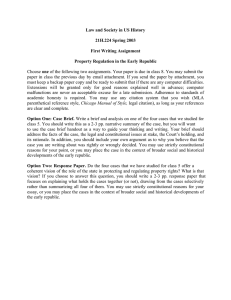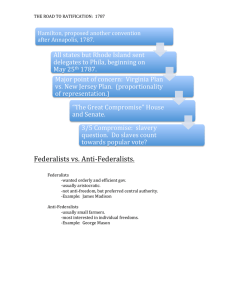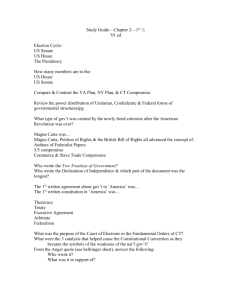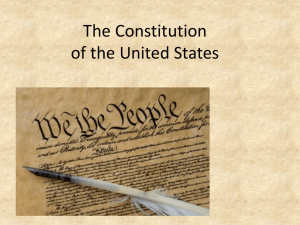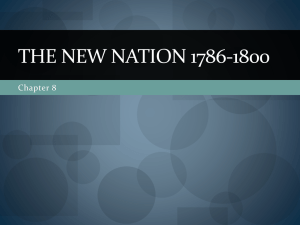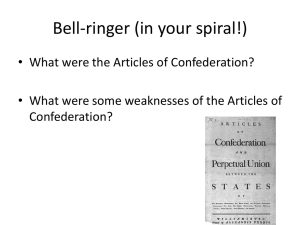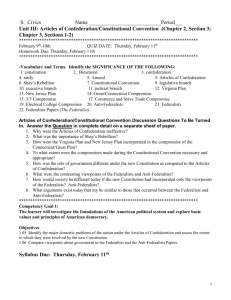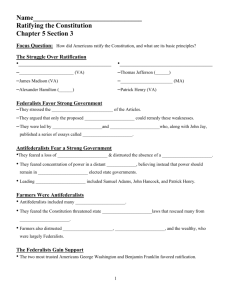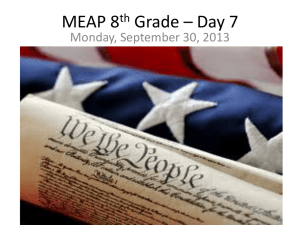Unit4 Outline: Nation Building/Civics
advertisement
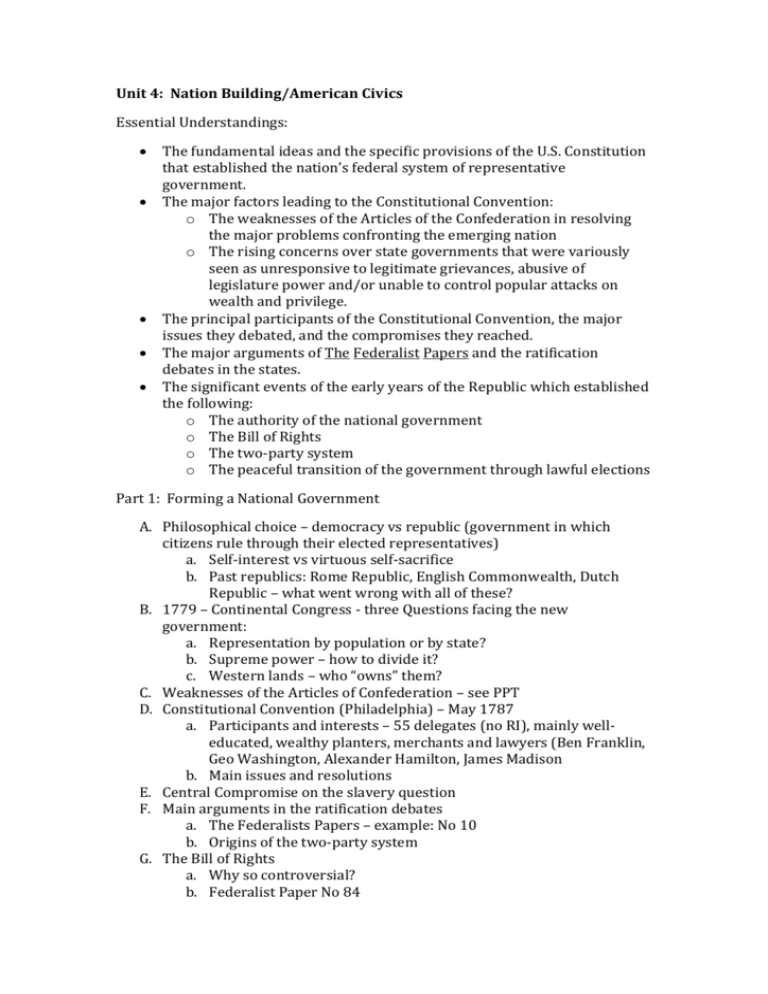
Unit 4: Nation Building/American Civics Essential Understandings: The fundamental ideas and the specific provisions of the U.S. Constitution that established the nation’s federal system of representative government. The major factors leading to the Constitutional Convention: o The weaknesses of the Articles of the Confederation in resolving the major problems confronting the emerging nation o The rising concerns over state governments that were variously seen as unresponsive to legitimate grievances, abusive of legislature power and/or unable to control popular attacks on wealth and privilege. The principal participants of the Constitutional Convention, the major issues they debated, and the compromises they reached. The major arguments of The Federalist Papers and the ratification debates in the states. The significant events of the early years of the Republic which established the following: o The authority of the national government o The Bill of Rights o The two-party system o The peaceful transition of the government through lawful elections Part 1: Forming a National Government A. Philosophical choice – democracy vs republic (government in which citizens rule through their elected representatives) a. Self-interest vs virtuous self-sacrifice b. Past republics: Rome Republic, English Commonwealth, Dutch Republic – what went wrong with all of these? B. 1779 – Continental Congress - three Questions facing the new government: a. Representation by population or by state? b. Supreme power – how to divide it? c. Western lands – who “owns” them? C. Weaknesses of the Articles of Confederation – see PPT D. Constitutional Convention (Philadelphia) – May 1787 a. Participants and interests – 55 delegates (no RI), mainly welleducated, wealthy planters, merchants and lawyers (Ben Franklin, Geo Washington, Alexander Hamilton, James Madison b. Main issues and resolutions E. Central Compromise on the slavery question F. Main arguments in the ratification debates a. The Federalists Papers – example: No 10 b. Origins of the two-party system G. The Bill of Rights a. Why so controversial? b. Federalist Paper No 84 Part 2: American Civics Using the Constitution, we will study the following components of American government: 1. Federal Government – separate of power / division of power a. Executive Branch i. Election ii. Responsibilities b. Legislative Branch i. Election ii. Responsibilities c. Judicial Branch i. Appointed ii. Responsibilities 2. State Government 3. Local Government 4. Constitutional Amendments Identifications/Key Concepts: Republic Federalism States rights James Madison Great Compromise Three-Fifths Compromise Federalists Anti-Federalists The Federalists Papers No 10 and 84 Land Ordinance of 1785 Northwest Ordinance of 1787 Shay’s Rebellion Ratification Checks and balances Separation of power Amendments

